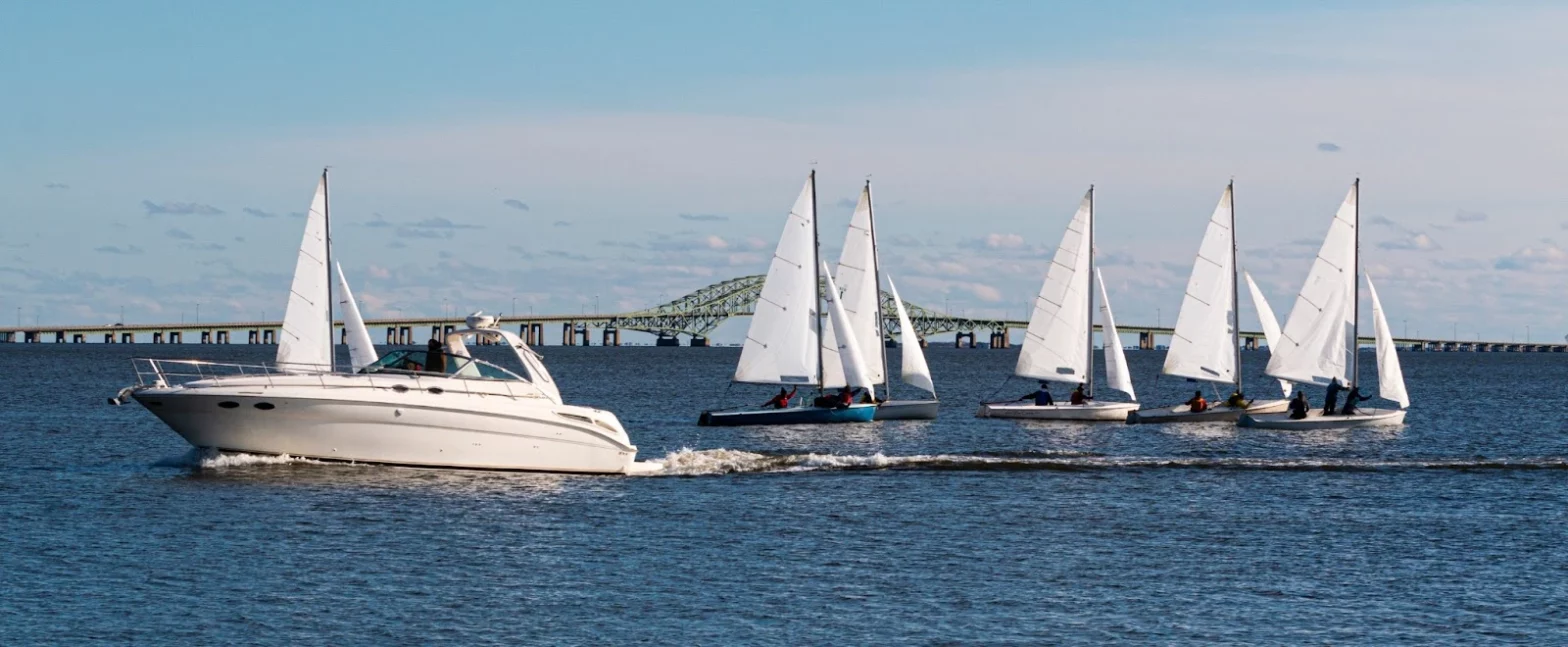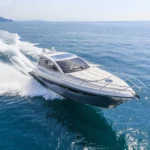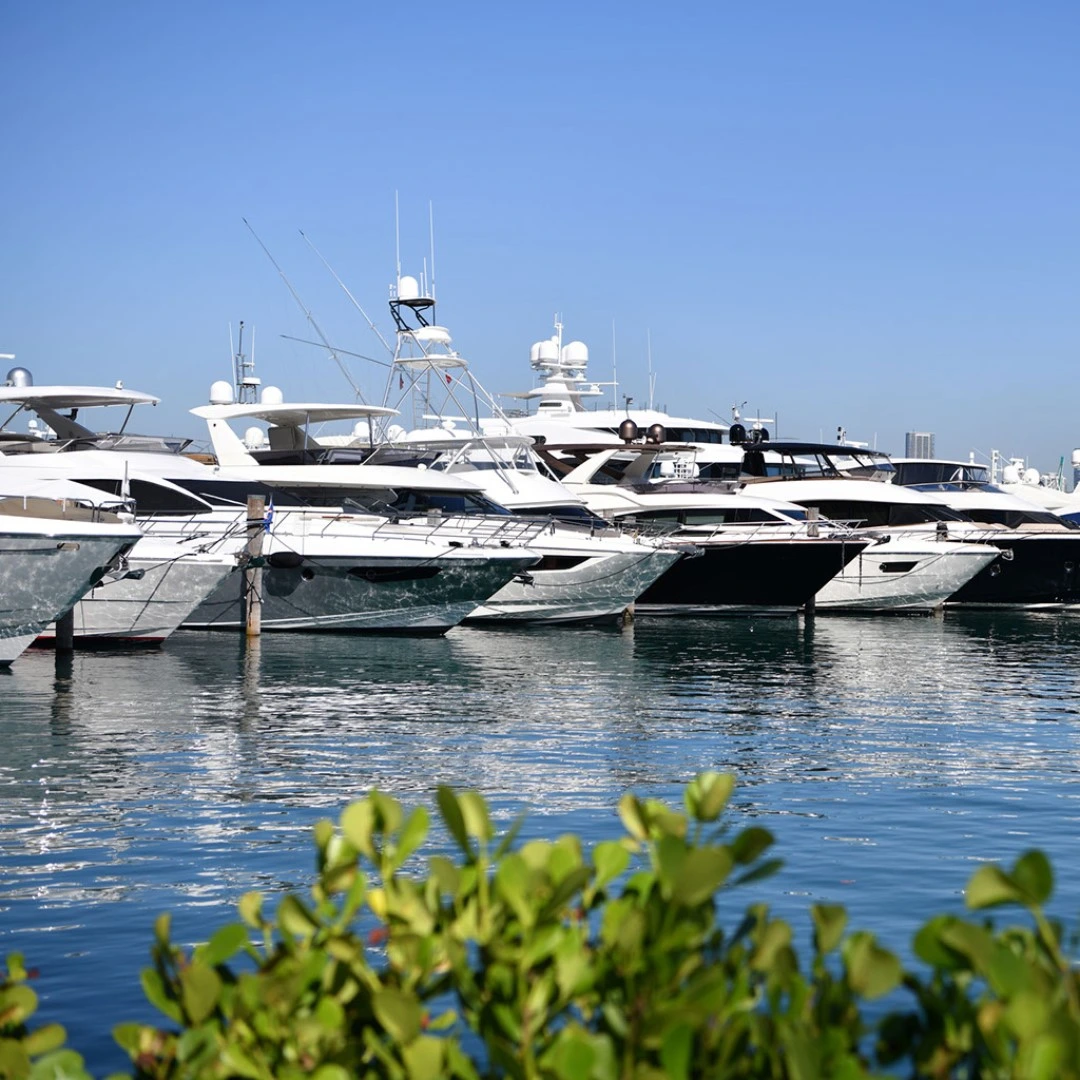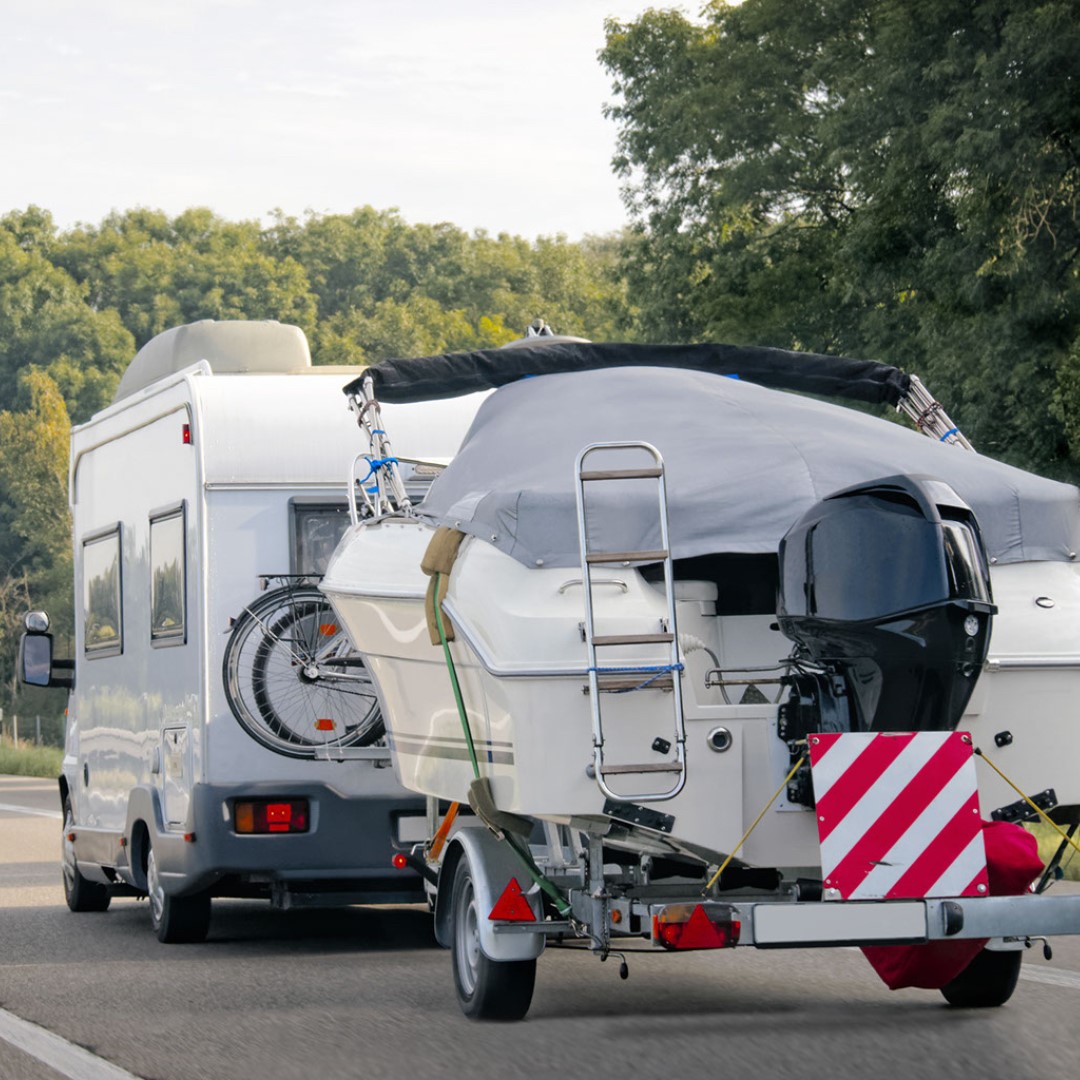No matter how experienced you are on the water, it’s always good to be reminded of the waterways. This is especially true when you’re in unfamiliar territory. There are rules and signs to follow to keep you, your passengers and your fellow boaters safe while on the water.
What are Right of Way Rules?
Right of way rules, often referred to as the “rules of the road” for boating, are a set of guidelines that help boaters navigate waters safely and avoid collisions. These rules establish a clear hierarchy for vessels when they encounter each other in different situations.
Why Are Right of Way Rules Important?
Just like traffic rules on the road, right of way rules ensure predictability and order on the water. They help boaters anticipate the actions of other vessels and make informed decisions to avoid potential hazards. By adhering to these rules, boaters can create a safer environment for everyone on the water.
Key Right of Way Rules
Head-On Approach – When two boats are approaching each other head-on, both should alter their course to starboard (right) to pass on the port side (left) of the other boat.
Overtaking – The boat overtaking another vessel should keep a safe distance and avoid interfering with the other boat’s course. The boat being overtaken has the right of way.
Crossing Paths – When two boats are crossing paths, the boat with the other on its starboard side has the right of way. The boat on the port side should yield and avoid interfering with the other boat’s course.
Sailing and Power Boats – Sailboats generally have the right of way over powerboats. However, if a sailboat is overtaking a powerboat, it should yield.
Restricted Ability to Maneuver – Boats that cannot easily change course, like large vessels or boats engaged in fishing, have the right of way. Other boats should give them enough space to maneuver safely.
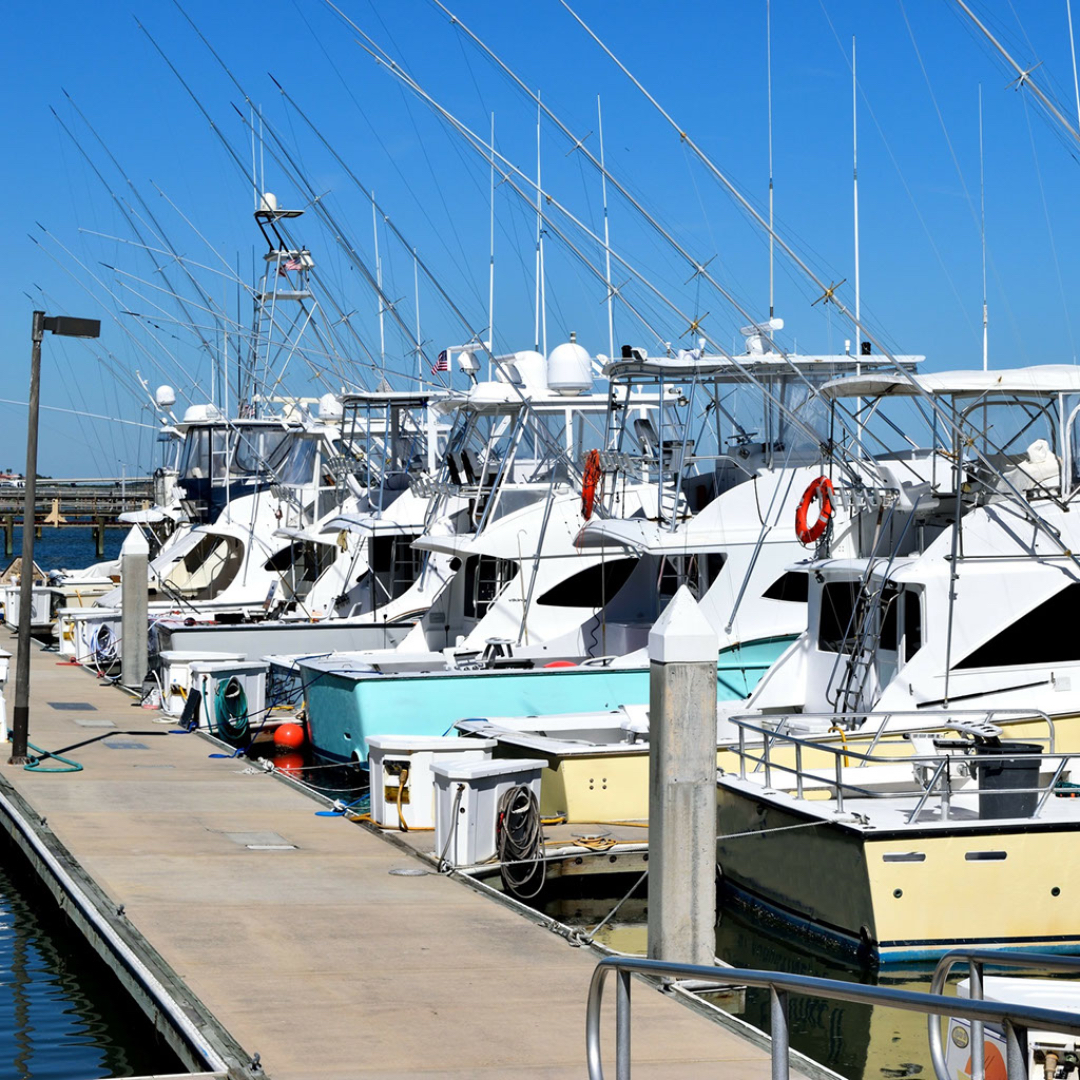
Understanding Right of Way in Sailing
Encountering another sailing vessel on the water involves a set of specific rules to ensure safe navigation. Here’s a breakdown of sailing right of way:
Starboard Tack Rule – When two sailboats are on different tacks (wind direction), the boat on starboard tack – with the wind coming over the right side – holds the right of way. This means that if you’re on a starboard tack, other boats should yield to you.
Leeward Boat Rule – If two sailboats are on the same tack, the boat on the leeward side (downwind) generally has the right of way. The leeward boat is presumed to have less favorable wind conditions and needs room to maneuver effectively.
Passing Situation on the Same Tack – In a passing scenario where two sailboats are on the same tack, the boat being overtaken (the one behind) is given the right of way. This ensures that the overtaking boat avoids interfering with the other boat’s course.
As a responsible captain, it’s crucial to internalize these rules and prioritize safe navigation:
- Even if you have the right of way, it’s your responsibility to avoid potential collisions. Slow down, assess the situation, communicate your intentions, and operate in a manner that ensures safety.
- Don’t assume that the other sailor understands right of way rules. Always be prepared to take evasive action to prevent accidents.
For a comprehensive understanding of navigation rules, you can refer to the “Navigation Rules of the Road” publication by the U.S. Coast Guard (COMDTINST 16672.2 Series). This resource provides a detailed guide to various scenarios and rules for safe navigation. It’s available through the U.S. Government Printing Office as well as online.
Adapting to Different Situations
It’s important to note that right of way rules may vary based on the type of water you’re navigating. Inland waters, like rivers and lakes, might have different rules compared to open offshore waters. Additionally, factors such as weather conditions and visibility can influence right of way decisions. Always prioritize safety and communication with other boaters to prevent misunderstandings.
FAQ
Q What are right of way rules in boating and sailing?
Right of way rules in boating and sailing are guidelines that determine which vessel has priority when two or more boats encounter each other on the water. These rules help prevent collisions and ensure safe navigation
Q How do I determine which boat has the right of way?
The right of way is determined by factors such as the type of vessels, their positions, and the direction of the wind. In sailing, factors like tack (wind direction) and vessel type play a role in deciding who should give way and who should stand their course.
Q Are right of way rules the same everywhere?
While the basic principles of right of way apply internationally, specific rules might vary depending on the region, type of waterway (inland or offshore), and local regulations. It’s important to familiarize yourself with the rules applicable to your boating area.
Q What should I do if I’m unsure about the right of way during a boating encounter?
If you’re unsure about the right of way situation, it’s safer to give way and avoid a potential collision. Communicate with the other vessel if possible and make a cautious maneuver to ensure everyone’s safety.
Q Do right of way rules apply to all types of watercraft?
Right of way rules generally apply to all types of vessels, including sailboats, powerboats, and commercial ships. However, certain vessels with restricted maneuverability, like large ships or vessels engaged in fishing, might have special considerations.
Mastering right of way rules is an essential part of responsible boating. By adhering to these rules, you contribute to a safer and more enjoyable boating experience for everyone. Remember that courtesy and communication are key to avoiding conflicts and accidents on the water. Whether you’re cruising on a calm lake or navigating through busy channels, knowing and respecting right of way rules is a fundamental aspect of being a skilled boater.
Safe Boating!
More for you to read;
Mastering Basic Boating Navigation Techniques.
Navigating Hurricane Season: A Guide For Safe Boating.
A Boater’s Guide To Responsible And Sustainable Practices.
Right of way rules in boating and sailing are guidelines that determine which vessel has priority when two or more boats encounter each other on the water. These rules help prevent collisions and ensure safe navigation
The right of way is determined by factors such as the type of vessels, their positions, and the direction of the wind. In sailing, factors like tack (wind direction) and vessel type play a role in deciding who should give way and who should stand their course.
While the basic principles of right of way apply internationally, specific rules might vary depending on the region, type of waterway (inland or offshore), and local regulations. It’s important to familiarize yourself with the rules applicable to your boating area.
If you’re unsure about the right of way situation, it’s safer to give way and avoid a potential collision. Communicate with the other vessel if possible and make a cautious maneuver to ensure everyone’s safety.
Right of way rules generally apply to all types of vessels, including sailboats, powerboats, and commercial ships. However, certain vessels with restricted maneuverability, like large ships or vessels engaged in fishing, might have special considerations.
